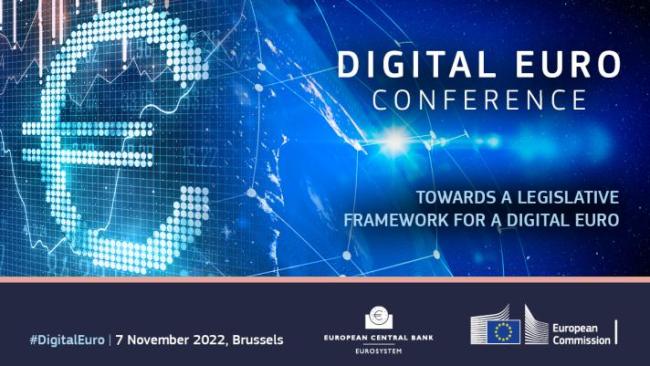
H.M. Queen Máxima of the Netherlands, the United Nations Secretary-General’s Special Advocate for Inclusive Finance for Development (UNSGSA), provided live virtual remarks for the European Commission and European Central Bank Conference “Towards a legislative framework enabling a digital euro for citizens and businesses” on 7 November 2022.
---
Executive Vice President Dombrovskis, President Lagarde, Ministers, Commissioners, Ladies and Gentlemen,
It is a pleasure to join with you virtually today.
I thank you for this opportunity to put financial inclusion at the heart of our discussions about a digital euro.
Over the last decade, the Eurozone has achieved almost universal financial inclusion — up from 90 percent in 2011.
This is a milestone to be celebrated — providing millions of people with new opportunities to build resilience and invest in their future.
But broadening access is only the first step.
There is still much to do to improve both the depth and the quality of services available to people, especially the underserved. For example, over the last year:
- One in five adults have not made any digital merchant payments. This even includes not using a card to purchase things in a store.
- Two in five adults have not received a digital payment of any kind, nor bought something online.
- And in some Eurozone countries, more than one in four people cannot come up with emergency funds to cover a shock event within 30 days.
If designed and implemented with inclusion in mind, central bank digital currencies can offer a powerful tool to help meet these challenges.
But they can also pose new risks, which require sound governance to overcome.
So let us proceed with caution — keeping inclusion foremost in mind.
Let us ask, how might a digital euro benefit underserved groups?
Traditional financial services have created roadblocks for inclusion: such as transaction fees, minimum account balances, or onerous document requirements.
New digital financial services suffer from a low level of trust, poor customer experiences, and the lack of digital capacities among some groups.
While CBDCs are not the only way to overcome these barriers, they can help: both encouraging providers to lower costs and broaden access, while also incorporating the advantages of central-bank money — such as safety, finality, liquidity, and integrity.
Central banks already coordinate improvements to retail payments by adopting fast payment systems, and CBDCs may represent the next step.
CBDCs could aide in upgrading and connecting payment systems — both domestically and across borders. This could help cut the cost of remittances.
Last year, globally, the average cost of sending 200 Euros was 6 percent — and the cost of sending a remittance to Ukraine from Germany is 6.5 percent. This is well above the sustainable development goal of 3 percent.
Central bank digital currencies could also offer benefits for social policies.
Governments could use a digital euro to channel financial support to low-income households. This would deepen longer-term inclusion, and act as a gateway to other financial services.
But these advantages are not automatic.
The implementation of any CBDC could be accompanied by policy reforms and safeguards, to address difficulties and risks.
These include overcoming low levels of financial and digital literacy, and operational challenges, including cybersecurity.
Policy reforms should also prevent disintermediation: the danger that money will be held in large amounts in CBDC wallets, rather than as deposits in commercial banks — which could make it unavailable for lending, for working capital for small entrepreneurs, or mortgages.
The design of CBDCs could give people more control over their transaction data, and the ability to share it with a wider set of financial service providers. This could support envisioned innovations from the Digital Markets and Digital Service Acts.
Yet growing concerns about data privacy would need to be addressed, by building personal data protections into the structure of the digital currency.
More dialogue, research, and trials are needed, to show how and when CBDCs can best become engines for deepening financial inclusion.
And more work is needed to understand their unique value compared to existing payment systems.
To that end, I am encouraged by the technical work and ongoing consultation by the European Central Bank.
And I applaud the efforts to enhance these discussions across European institutions.
By bringing partners together, we can better balance design choices between privacy protection and transparency, and ensure both financial inclusion, financial integrity, and stability.
Public sector representatives have a duty to ensure that the financial system is open, inclusive, and responsive to the needs of all groups.
So let us envision that better future and build a digital euro that works for all Europeans.
I thank you for your time.